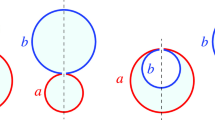Summary p Effect of cholesterol, divalent ions and pH on spherical bilayer membrane fusion was studied as a function of increasing temperature. Spherical bilayer membranes were composed of natural [phosphatidylcholine (PC) and phosphatidylserine (PS)] as well as synthetic (dipalmitoyl-PC, dimyristoyl-PC and dioleoyl-PC) phospholipids.
Incorporation of cholesterol into the membrane (33% by weight) suppressed the fusion temperature and also greatly reduced the percentage of membrane fusion. The presence of 1mM divalent ions (Ca++, Mg++ or Mn++) on both sides or one side of the PC membrane did not affect appreciably its fusion characteristic with temperature, but the PS membrane fusion with temperature was greatly enhanced by the presence of divalent ions.
The variation of pH of the environmental solution in the range of 5.5∼7.0 did not affect the membrane fusion characteristic. However, at pH 8.5, the fusion with respect to temperature was shifted toward the lower temperature by approximately 3°C for PC and PS membranes, and at pH 3.0 the opposite situation was observed as the fusion temperature was increased by 6°C for PS membranes and by 4°C for PC membranes
The results seem to indicate that membrane fluidity and structural instability in the bilayer are important for membrane fusion to occur.
Similar content being viewed by others
References
Ahkong, Q.F., Cramp, F.C., Fisher, D., Howell, J.I., Tampion, W., Verrinda, M., Lucy, J.A. 1973. Chemically induced and thermally induced cell fusion.Nature New Biol. 242:215
Ahkong, Q.F., Tampion, W., Lucy, J.A. 1974. Mechanisms of chemically induced cell fusion.Biochem. Soc. Trans. 12:1021
Breisblatt, W., Ohki, S. 1975. Fusion in phospholipid spherical membranes: I. Effect of temperature and lysolecithin.J. Membrane Biol. 23:385
Engelman, D.M., Rotham, J.E. 1972. The planar organization of lecithin-cholesterol bilayers.J. Biol. Chem. 247:3694
Hauser, H., Dawson, R.M.C. 1967. The binding of calcium at lipid-water interface.Eur. J. Biochem. 1:61
Hauser, H., Phillips, M.C., Barratt, M.D. 1975. Difference in the interaction of inorganic and organic (hydrophobic) cations with phosphatidylserine membranes.Biochim. Biophys. Acta 413:341
Haydon, D.A., Taylor, J. 1963. The stability and properties of bimolecular lipid leaflets in aqueous solutions.J. Theor. Biol. 4:281
Ito, T., Ohnishi, S. 1974. Calcium induced lateral phase separation in phosphatidic acidphosphatidyl choline membranes.Biochim. Biophys. Acta 352:28
Jacobson, K., Papahadjopoulos, D. 1975. Phase transitions and phase separation in phospholipid membranes induced by changes in temperature, pH and concentration of bivalent cations.Biochemistry 14:152
Ladbrooke, B.D., Chapman, D. 1969. Thermal analysis of lipids, proteins and biological membranes.Chem. Phys. Lipids 3:304
Ladbrooke, B.D., Williams, R.M., Chapman, D. 1968. Studies on lecithin-cholesterol-water interaction by DSC and X-ray diffraction.Biochim. Biophys. Acta 150:333
Liberman, E.A., Nenashev, V.A. 1972a. Kinetics of adhesion and surface electrical conductivity of bimolecular phospholipid membranes.Biofizika 17:231
Liberman, E.A., Nenashev, V.A. 1972b. Modeling of the changes in permeability of cellular contact with bimolecular phospholipid membrane.Biofizika 17:1017
Lucy, J.A. 1964. Globular lipid micelles and cell membranes.J. Theor. Biol. 7:360
Lucy, J.A. 1970. The fusion of biological membrane.Nature (London)227:815
Neher, E. 1974. Asymmetric membranes resulting from the fusion of two black lipid membranes.Biochim. Biophys. Acta 373:327
Ohki, S. 1969. The variation of the direct current resistance of lipid bilayers.J. Colloid Interface Sci. 30:413
Ohki, S., Aono, O. 1970. Phospholipid bilayer-micelle transformation.J. Colloid Interface Sci. 32:270
Ohki, S., Breisblatt, W. 1975. Cell Fusion in Model Membrane Systems. 49th National Colloid Symposium, Potsdam, New York
Ohki, S., Papahadjopoulos, D. 1970. Asymmetric phospholipid membranes: Effect of pH and Ca++.In: Surface Chemistry of Biological Systems. M. Blank, editor. p. 155. Plenum Press, New York
Okada, Y., Murayama, F. 1966. Requirement of calcium ions for the cell fusion reaction of animal cell by HJV.Exp. Cell Res. 44:527
Okada, I., Takeichi, M., Yasuda, K., Masamichi, J. 1974. The role of divalent cations in cell adhesion.In: Advance in Biophysics. M. Kotani, editor. Vol. 6, p. 157. University Park Press. Baltimore
Pagano, R., Thomspon, T.E. 1967. Spherical lipid bilayer membranes.Biochim. Biophys. Acta 144:666
Papahadjopoulos, D., Nir, S., Ohki, S. 1971. Permeability properties of phospholipid membranes: Effect of cholesterol and temperature.Biochim. Biophys. Acta 226:561
Papahadjopoulos, D., Poste, G., Schaeffer, B.E. 1973. Fusion of mammalian cells by unilamellar vesicles.Biochim. Biophys. Acta 323:23
Papahadjopoulos, D., Poste, G., Schaeffer, B.E., Vail, W.J. 1974. Membrane fusion and molecular segregation in phospholipid vesicles.Biochim. Biophys. Acta 353:10
Papahadjopoulos, D., Vail, W.J., Jacobson, K., Poste, G. 1975. Cochleate lipid cyclinders: Formation by fusion of unilamella vesicles.Biochim. Biophys. Acta 394:483
Poole, A.R., Howell, J.I., Lucy, J.A. 1970. Lysolecithin and cell fusion.Nature (London) 227:810
Poste, G., Allison, A.C. 1971. Membrane fusion reaction: A theory.J. Theor. Biol. 32:165
Poste, G., Reeve, P. 1972. Inhibition of virus-induced cell fusion by local anesthetics and phenothiozine tranquilizers.J. Gen. Virol. 16:21
Rojas, E., Tobias, J.M. 1965. Membrane model: Association of inorganic cations with phospholipid monolayers.Biochim. Biophys. Acta 94:394
Seimiya, T., Ohki, S. 1973. Ionic structure of phospholipid membrane, and binding of calcium ions.Biochim. Biophys. Acta 298:546
Träuble, H., Eibl, H. 1974. Electrostatic effects on lipid phase transitions, membrane structure and ionic environment.Proc. Nat. Acad. Sci. USA 71:214
Woodin, A.M., Wieneke, A.A. 1964. The role of Ca++, ATP and ATPase in protein extrusion.Biochem. J. 90:498
Author information
Authors and Affiliations
Rights and permissions
About this article
Cite this article
Breisblatt, W., Ohki, S. Fusion in phospholipid spherical membranes. J. Membrain Biol. 29, 127–146 (1976). https://doi.org/10.1007/BF01868956
Received:
Revised:
Issue Date:
DOI: https://doi.org/10.1007/BF01868956




